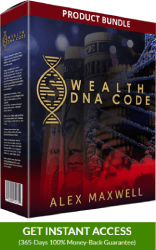
On-page SEO, which is also known as on-site SEO, involves optimizing the content of your webpage for both search engines and users. Tasks commonly associated with on-page SEO include optimizing for search intent, title tags, internal links, and URLs.
When examining a page, search engines such as Google assess the content to determine if it aligns with a user’s search intent. If the search engine determines that the page will be beneficial to the user, it will rank it higher in search results.
In the following section, we will discuss various methods for enhancing your site’s on-page optimization.
Before we proceed, it is important to grasp the distinction between on-page SEO and off-page SEO.
What’s the Difference Between On-Page SEO and Off-Page SEO?
On-page SEO encompasses all the actions that can be taken internally on a webpage to enhance your rankings.
Off-page SEO involves optimizing elements external to your site to enhance rankings, encompassing activities like backlinking, which is considered the most significant factor. Additional examples encompass social media and PR.
Both parts, adding new information and not removing information, are crucial components of a strong SEO strategy.
A good starting point when developing your SEO strategy is to concentrate on the on-page SEO factors, as they offer you more control.
Why Is On-Page SEO Important?
Search engines examine keywords and additional on-page SEO elements to evaluate whether a page aligns with a user’s search intent.
Google serves relevant and useful web pages to the user if they are available.
Google takes into account on-page SEO signals when ranking pages.
The Google algorithm changes frequently, however, Google consistently gives priority to user experience. Google suggests concentrating on content that puts people first.
There is a greater importance now placed on creating valuable content that aligns with user intent.
On-Page SEO Techniques
Publish High-Quality Content
It is important to always keep in mind the following when dealing with SEO: A website that has excellent content can thrive regardless of SEO. Conversely, a website with poor content will struggle to survive, regardless of SEO. Moreover, a website that already has good content can further enhance its performance with SEO.
To start with, what qualifies as good content? Good content exhibits the following attributes that contribute to its high quality:
- Original content (articles, text, images, videos, comments, etc.) – No copies or rewrites of existing articles.
- Content exclusive for your website – Even if it’s your own content, if you have already published it on another website, it’s not good for your site.
- Content that includes text elements – Always use text to accompany your non-text content. For example, if you post videos on your website, try to add a text description as well. If you add images, try to describe in words what the image is all about.
- Create helpful, people-first content– Don’t publish content for the sake of publishing. Before hitting the publish button, make sure that what goes live adds value to your website and readers.
- Content that is well researched – Users don’t want to read quickly prepared posts, and neither do search engines.
- Unbiased content – If you are writing about a certain topic or answering a question, make sure that what you write is justified and covers both sides of a story.
Before publishing any content on your website, you need to understand what type of content users want to see for a given search query, in addition to the aforementioned characteristics. Moreover, you must ensure that your content satisfies the search intent.
Optimize Page Titles
This is an essential aspect of on-page SEO – it’s SEO 101. When search engines crawl your webpages, they inspect the title tag along with other elements.
The reason they do this is because they require comprehension of the page’s content, and subsequently, they assess other aspects (off-page SEO, domain authority, competition, etc.) to determine the ranking position of your page (for different keywords) in their search results.
Each page requires a distinct title that aids search engines and users in comprehending the page’s content.
A page titled index.html is not as good as a page titled On-Page SEO Tips for Beginners.
The most crucial tips for optimizing page titles are:
Adding keywords to the beginning of your page titles is a helpful strategy to assist search engines in quickly understanding the content of your page.
Do not feel the need to engage in keyword stuffing, even if you cannot place the keyword at the beginning. However, ensure that the title includes your targeted keyword without exceeding limits.
Creating concise and descriptive page titles – Aim for titles under 70 characters for optimal visibility on Google search results.
The presence of numbers in the title and the use of power words such as “ultimate, actionable, amazing, checklist, etc.” enhance the appeal of titles, thus boosting their Click-through rate (CTR).
Including your domain in the title is not necessary as Google automatically adds it. Instead, utilize the 70 characters to accurately describe the page. However, if you have a well-known brand, you can make an exception and include it in the title.
Optimize Meta Descriptions
The page’s meta description is displayed on the search engine results page (SERPS). Each description must be descriptive, limited to 200 characters, and distinct for every page.
You have the chance to promote your page and persuade users to choose your link and explore your website instead of choosing any other links.
It should be noted that Google often uses an automated description if they believe it is more useful for the searcher, although they do not always display the custom meta description.
The following are the most important tips for optimizing meta-descriptions:
To maintain consistency, it is recommended to avoid using auto-generated descriptions, even though Google may not utilize them. Using descriptions that may not make sense is considered a best practice to be avoided.
To improve the relevance and appeal of descriptions to searchers, it is important to rephrase the text step by step without adding or removing any information. Additionally, incorporating target keywords in the description is crucial as Google highlights search terms in both the title and description.
Optimize Page Content
Content SEO is a component of on-page SEO that entails optimizing the content to align with your desired keywords.
The initial step in preparing content (text, images, audio, or video) for publishing is conducting keyword research.
In order to determine the search terms that users input into the search box and produce content that meets their needs, it is essential to think methodically step by step.
After determining your target keywords, it is advisable to compile a collection of related keywords and longtail keywords. These should then be incorporated into your titles, descriptions, headings, and page content.
Search algorithms developed by Google have become more advanced, and in addition to analyzing keyword relevancy in content, they now assess the relevance of topics as well.
In order to increase the relevance of your content to general topics, it is necessary to enhance your content by incorporating relevant keywords.
There are multiple approaches to determine the keywords that Google considers relevant to your target keywords.




